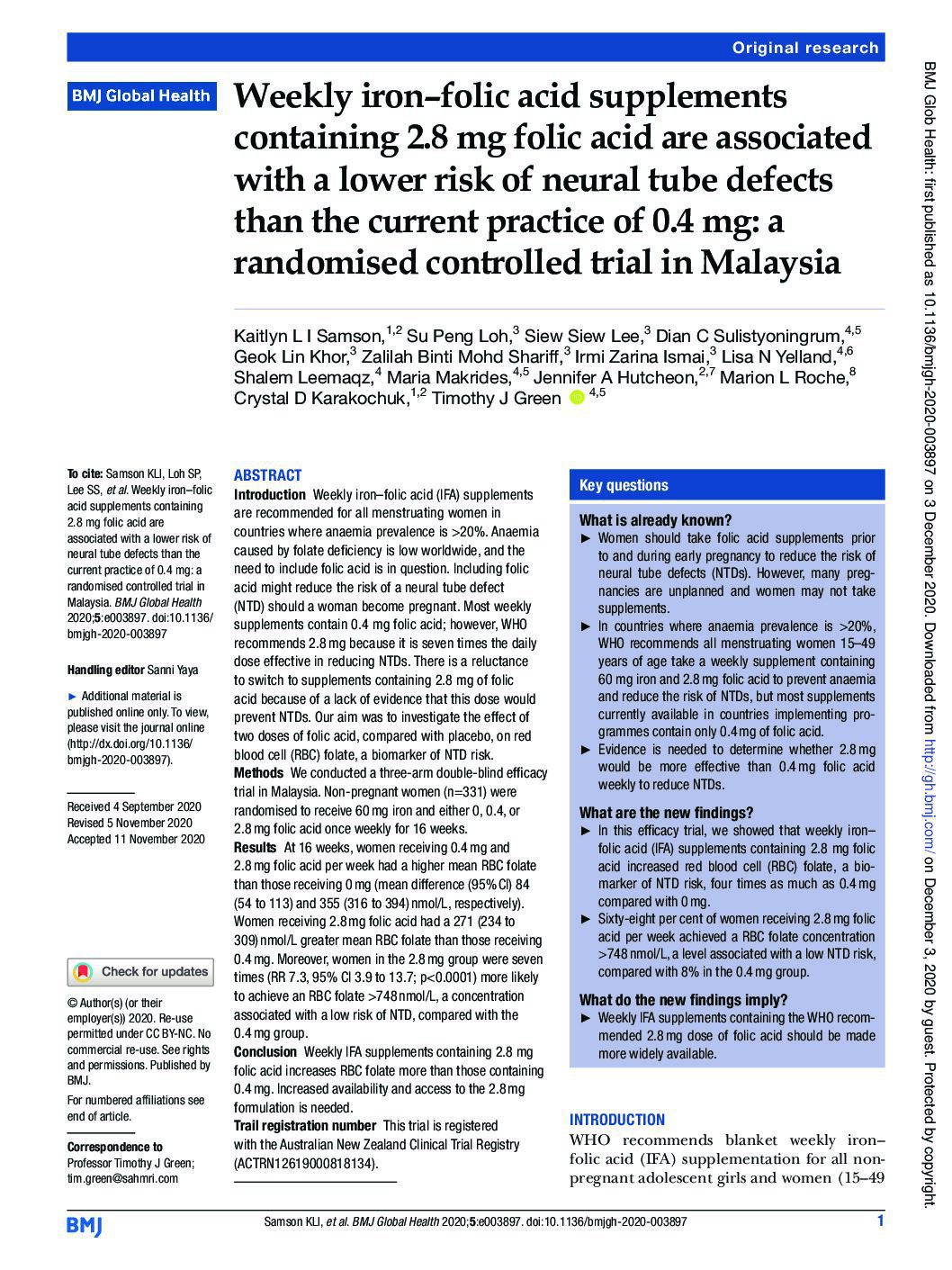Field Story
2022: celebrating milestones, innovations and making a difference globally
December 30, 2022
Weekly iron–folic acid supplements containing 2.8 mg folic acid are associated with a lower risk of neural tube defects than the current practice of 0.4 mg: a randomised controlled trial in Malaysia
Overview
This study is technically and financially supported by Nutrition International. The objective was to assess the effect of weekly of iron and folic acid supplementation (WIFAS) with 2.8 mg and 0.4 mg of folic acid in raising red blood cell (RBC) folate and plasma folate to concentrations associated with a reduced risk of NTD. This three-arm, parallel-group, randomized, double-blind, placebo control trial was conducted in 2019 in Selangor, Malaysia. It involved 331 non-pregnant women between 18-25 years of age, who participated in a 16-week intervention period followed by a 4-week washout period, to simulate current dosing practices when WIFAS are offered in a school-year basis. The findings showed that 94% of participants adhered to treatment, and the recommended weekly dose of 2.8 mg folic acid, rather than the commonly used 0.4mg weekly dose, was 7 times more effective at increasing RBC folate above the WHO-recommended population cut-off to provide protection against an NTD-affected pregnancy than the 0.4 mg dose. Even after the 4-week wash-out period, women taking the 2.8 mg dose were ~4 times more likely to have protective RBC folate compared to those taking 0.4 mg dose. With these results, the authors conclude that countries currently using WIFAS containing 0.4 mg folic acid should be supported and encouraged to switch to the 2.8 mg formulation.
Download

Published by: BMJ Global Health
https://www.nutritionintl.org/wp-content/uploads/2020/12/Folic-acid-dose-response-study_Published-BMJ-paper.pdf
PDF (667.70 KB)